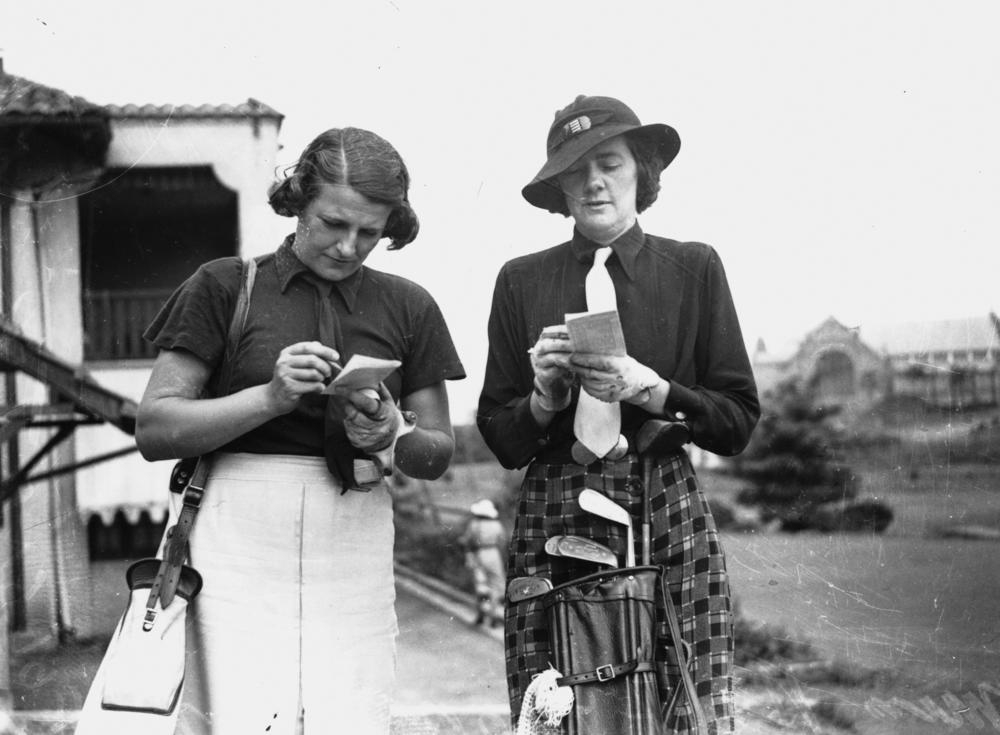Watch this space for the latest from GWD HQ, and keep your FOMO to a BM (that means Bare Minimum).
Finally, a Reason to Play Golf

Golf’s scoring system seems simple enough, even if your experience is limited to playing Golden Tee in the back of a Pizza Hut, or trying to putt a neon orange ball through a fiberglass clown’s mouth. You know how it works: if you hit the ball, you count it as one stroke. If you swing and miss the ball, you count it as one stroke. And if you’re deep in the woods where nobody but the ghost of Bambi’s mother can see you, and you hit the ball six times before you’re back in the fairway, you count all six strokes. (Do you hear us, Jason? ALL SIX STROKES.)
But there are times on the course when having the highest score means you’re winning (NOT YOU, JASON), and it’s thanks to Dr. Frank Stableford, a former member of Britain’s Royal Army Medical Corps and above-average amateur golfer. Between his service in the Boer War and World War I, Stableford spent a lot of time on the links, winning his local club’s championship and playing his way into the semi-finals of the Welsh Amateur Championship.
He wasn’t always crazy about golf’s existing scoring method and, after watching other players give up out of sheer frustration, he started to consider whether there was another way. “I was practicing on the 2nd fairway at Wallasey Golf Club one day in the latter part of 1931, when the thought ran through my mind that many players in competitions got very little fun since they tore up their cards after playing only a few holes and I wondered if anything could be done about it,” he said.
Stableford developed a scoring calculation that rewarded golfers for taking risks — for trying to play below par — but one that wouldn’t leave less-skilled players picking up the scraps of what used to be their scorecards. Under the Stableford System, players earn 6 points if their score on one hole is four under par (lol); 5 points if they’re three under par or score a hole-in-one; 4 points for being two under par; 3 points for being one under par (a birdie); 2 points for a par; 1 point for being one over par (a bogey); and zero points for being two over par.
Yeah, the highest score wins — and if you’re already two over par and are still pinballing your Titleist around the green, you can pick it up, write down a zero, and move to the next hole. (LIKE YOU DO EVERY WEEK, JASON).
There is also a modified Stableford System, which the PGA Tour uses during one event every year. The Barracuda Championship, which will be held in July at the Old Greenwood Golf Course in Truckee, California, is the Tour’s one-and-only Stableford stop. In the Modified Stableford format, a double-eagle (three under par) gets eight points; an eagle (two under par) is worth five; a birdie is worth two points; par is zero points; a bogey is -1 point; and a double bogey or more is -3 points.
“The strategy in Modified Stableford formats can, in most instances, be summed up in three words: Go for it,” the Barracuda Championship’s website explains. “For instance, if the professional is facing a carry over water that he normally wouldn’t try, the Modified Stableford format presents an incentive to go for it […] Those golfers who make a few bogeys but also make a lot of birdies or eagles are more likely to be atop the leaderboards.”
Except you, Jason. You’re more likely to be in the woods somewhere.
You’re now one step closer to solving this week’s Mystery Video Fun Club. Check it here!
Featured image courtesy of: State Library of Queensland, Australia